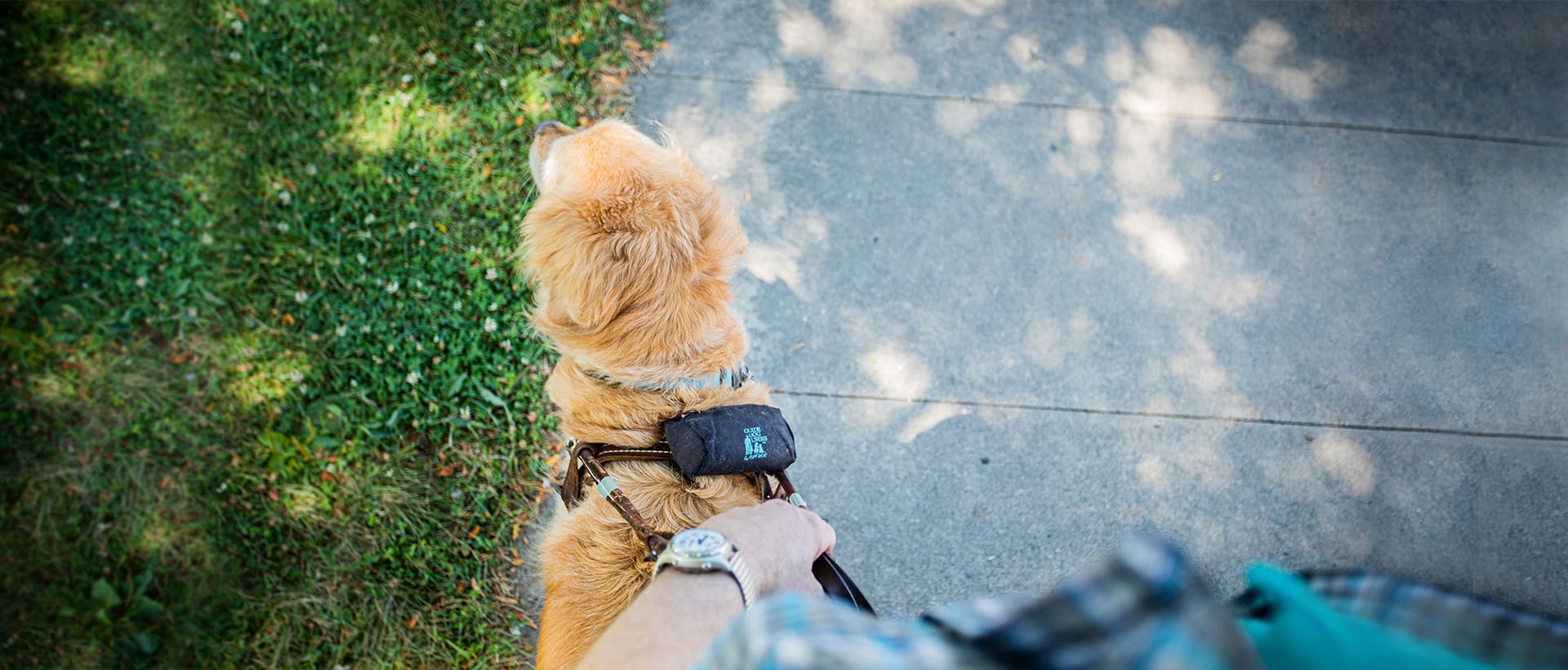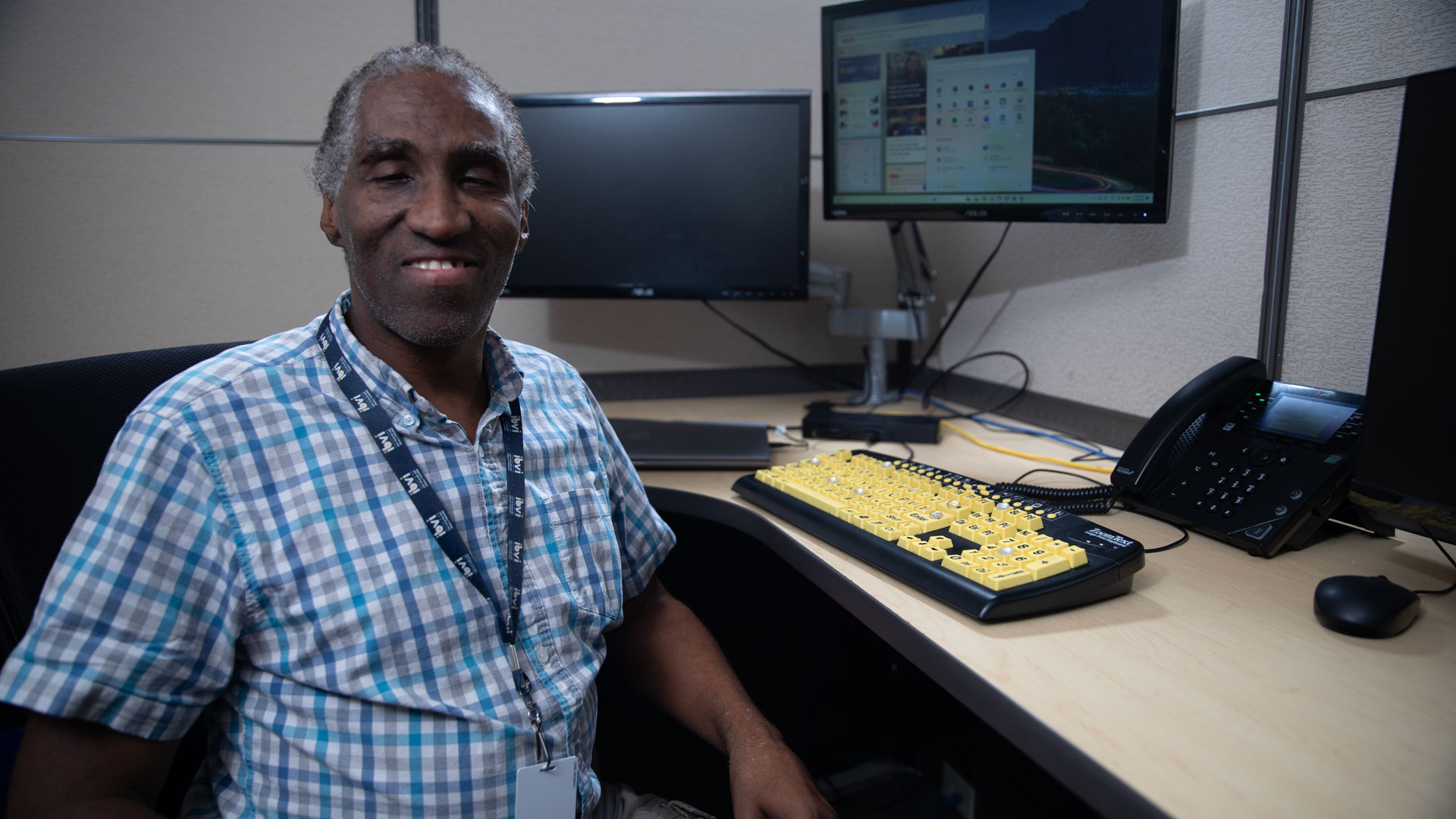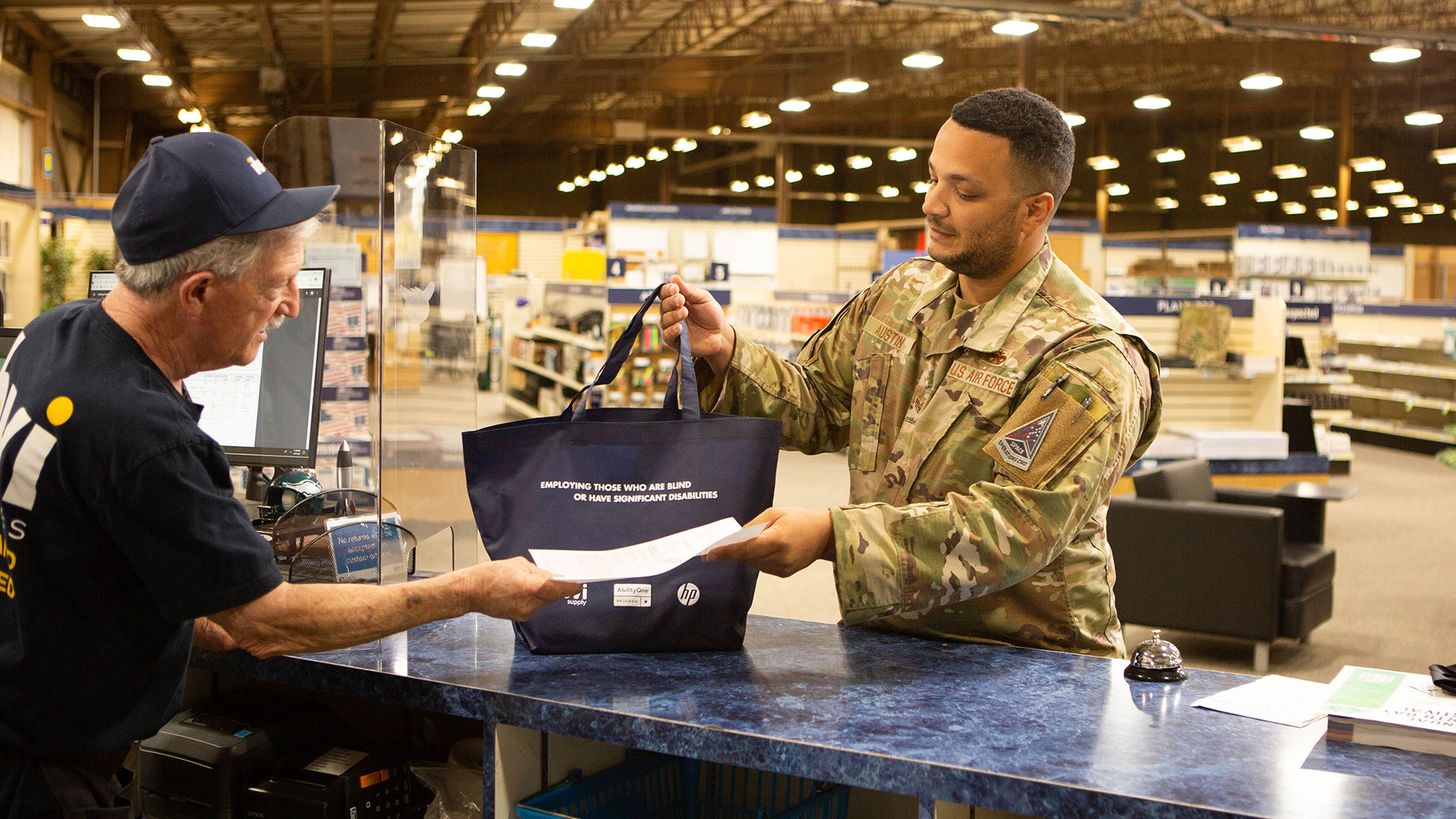In honor of National Guide Dog Month, we celebrate the important work these K9s do
It’s 6 a.m. and I wake to the sound of covers rustling. I hop onto the bed because this tells me my person is waking up. I let her know I’m ready for the day by giving her kisses. We snuggle for a few minutes before it’s time to begin our morning routine. Brush teeth. Go outside. Eat breakfast. Get ready. Put on my harness. Go to work.
Our walk to the bus is five blocks and I must watch out for any obstacles along the way. Sometimes it’s a garbage can left on the sidewalk or maybe a fallen branch that I need to direct us around. Since my owner is blind, she trusts me to be her eyes and keep her safe. When we come up to the crosswalk, I guide her to the stoplight pole so she can press the “walk” sign for us to cross. My owner and I both make sure no cars are coming before we go ahead—me using my sight and us both using our ears. When we climb onto the bus, I hear the command ‘close’ which tells me to put myself under the seat which keeps me out of the way of other passengers. I relax but stay vigilant—always ready to do my job.
As we get to our destination, I’m excited to say hello to all of my coworkers. But I have to wait until my harness comes off which means I’m off the clock and can say hello, get pets, take a nap, and play with my toys. I enjoy working and having a job to do. My person and I can work together with just body language most of the time. Sometimes when I do my job really well, people cheer for me and give me lots of treats—so I try to do that often. My handler calls it a ‘party.’
When it’s time to go home, my harness comes back on and I lead us to the bus stop. I repeat the same motions it takes to get to work. Make sure the street is clear before we cross. Watch out for obstacles. Don’t get distracted. Once we get home and my harness comes off, I get to be just like any other dog. I enjoy my time being a regular pup but I love having a job to do. And I’ll be ready again tomorrow. Because that’s my promise as a guide dog.

Guide dogs play an important role for those who are blind and visually impaired. Humans used them as guides since as early as medieval times. Seeing-eye dogs offer a sense of freedom and independence that technology can’t. The bond between a handler and their dog is something that can look different depending on the pair. While technology can be a great assistant, it works the same for each person, whereas a guide dog adapts to a person’s unique lifestyle and needs.
Born and raised to be the eyes of those who are blind or visually impaired, they spend at least a year being trained. Once matched, they train with their handlers so they can both work on understanding body language and ongoing training requirements. Handlers of guide dogs have to keep up with ongoing training as this helps the dogs remember their job and learn new ways to help their person.
A big requirement when choosing dogs to train is that they are a working breed—meaning they are bred to have jobs and assist people. The dogs need to have the desire and focus to work when it’s time to work. There are also height and weight requirements for guide dogs which is why you rarely see a Chihuahua or Great Dane leading someone who is blind or visually impaired. Not only does the handle height need to be comfortable for the handler, but guide dogs also need to be able to control their handler when needed.
When a dog and their handler click, they become partners for life. Whether it’s while they are working, relaxing or retiring, they rely on each other in a way that defies explanation. This makes these dogs the true definition of man’s (or woman’s) best friend.
If you are interested in learning more about guide dogs, please visit this list of organizations across the U.S. who dedicate their efforts to enrich the lives of those who are blind or visually impaired with seeing-eye dogs.


